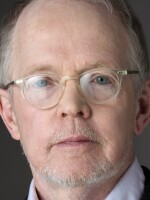

The Flyers: In Search of Wilbur and Orville Wright, the latest book by NPR's Noah Adams, follows the quest by the Wright brothers to be the first to build a heavier-than-air craft that could fly under its own power.
Adams and NPR's Melissa Block recently visited Fort Myer, Va., just across the Potomac River from Washington, D.C., to see the site of the demonstration flights Orville Wright performed for the U.S. Army Signal Corps in 1908 and 1909.
Adams says witnesses to those early flights could hardly believe what they had seen, though the aircaft flew barely 35 feet above the ground. Fort Myer is also the site of another first: On Sept. 17, 1908, Army Lt. Thomas Selfridge became the first person to be killed in the crash of a powered airplane. In an excerpt from the book, Adams describes the fateful flight:
From The Flyers: In Search of Wilbur and Orville Wright
I walk the fort's parade grounds, trying to imagine the flight that late Thursday afternoon, a cool day with light winds. The start would have been there by the flagpole. Lieutenant Selfridge, it's reported, took off his uniform jacket and campaign hat and sat down on the thin, narrow seat next to Orville.
With the engine exhaust explosions bouncing back from the brick buildings on either side of the field, the plane left the end of the rail, dipping once almost to the grass. Tom Selfridge, at 175 pounds, was the heaviest passenger Orville had tried to carry.
I continue south to stand in a parking lot not far from the boundary of Arlington Cemetery. Kim Holien had shown me the spot where it's believed the plane hit the ground. Orville made three turns around his oval course, climbed to 100 feet, steered for a wider turn. Those below heard two thumping noises, saw the plane shake, and noticed that Orville had cut off the motor. A propeller blade had split apart, losing power and setting up a vibration that led to the jamming of the rudder. The spectators watched as the left wing fell and the right wing rose.
Orville described it later: "Quick as a flash, the machine turned down in front and started straight for the ground. Our course for fifty feet was within a very few degrees of perpendicular. Lieutenant Selfridge up to this time had not uttered a word, though he took a hasty glance behind when the propeller broke, and turned once or twice to look into my face, evidently to see what I thought of the situation. But when the machine turned headfirst for the ground, he exclaimed 'Oh! Oh!' in an almost inaudible voice. Suddenly just before reaching the ground... the machine began to right itself rapidly. A few feet more, and we would have landed safely."
Three army surgeons were watching, and ran to the crash. A mounted cavalry officer tried to hold back the crowd. Selfridge and Orville were pulled from the dusty tangle of splintered wood and ripped fabric and taken by stretcher to the post hospital. Lieutenant Selfridge, never regaining consciousness, died that night of a fractured skull, a victim of the first fatal accident in a powered aircraft.
Copyright 2022 NPR. To see more, visit https://www.npr.org.




